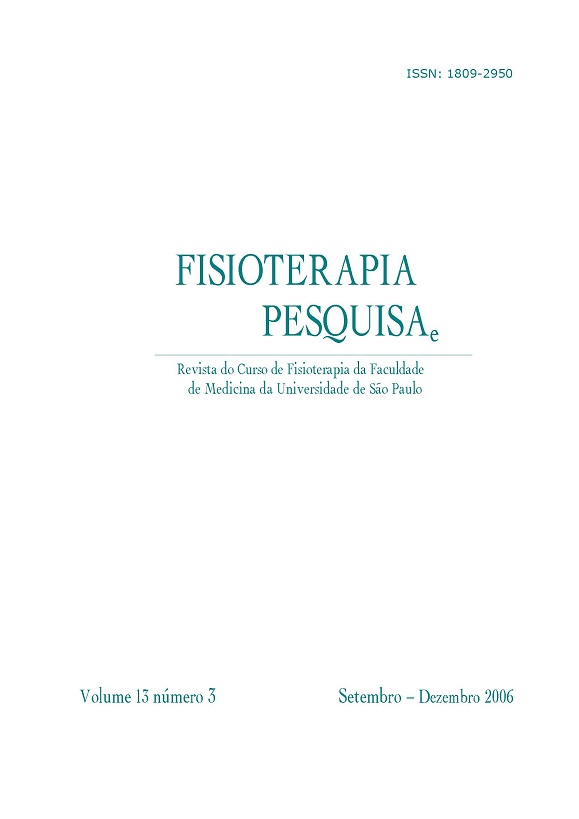Transmission of low-power laser through PVC plastic film
DOI:
https://doi.org/10.1590/fpusp.v13i3.76302Keywords:
laser/ helium-neon/ gallium-aluminium arsenide, transmission.Abstract
Low-intensity laser application is used in physical therapy in view of accelerating wound repair processes. In clinical practice, a PVC film is commonly used covering the laser pen’s tip to avoid contamination of the wound by the equipment, mainly on mucosa and cruent areas. From the therapeutic point of view, it is important to evaluate whether the PVC film interferes in the transmitted dosimetry to the tissue, minimizing therapy effects. The aim of this study was to evaluate the percentage of energy transmission of two laser equipments used in physical therapy clinics. Laser wavelengths were 632.8 nm for the HeNe (helium-neon) and 830 nm for the GaAlAs (gallium-aluminium arsenide) laser. For each wavelength a total of 150 measures were evaluated: 50 with direct irradiation (control group, CG) and with two different kinds of PVC film on the laser pen (experimental groups G1 and G2). Both PVC films were 0.01 mm thick. Results showed that the HeNe laser had the following losses when compared to CG: G1, 0.9% and G2, 0.8%; for the AsGaAl laser, the losses were G1, 2.3% and G2, 1.3%. In spite of statistically significant differences, the percentages of loss were small, showing that the film does not interfere in laser transmission. The PVC film can thus be used in clinical practice with no interference in laser dosimetry.Downloads
Download data is not yet available.
Downloads
Published
2006-12-31
Issue
Section
Original Research
How to Cite
Transmission of low-power laser through PVC plastic film. (2006). Fisioterapia E Pesquisa, 13(3), 38-43. https://doi.org/10.1590/fpusp.v13i3.76302



